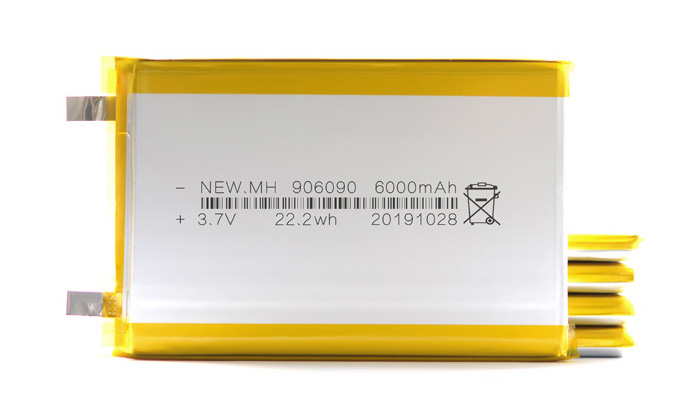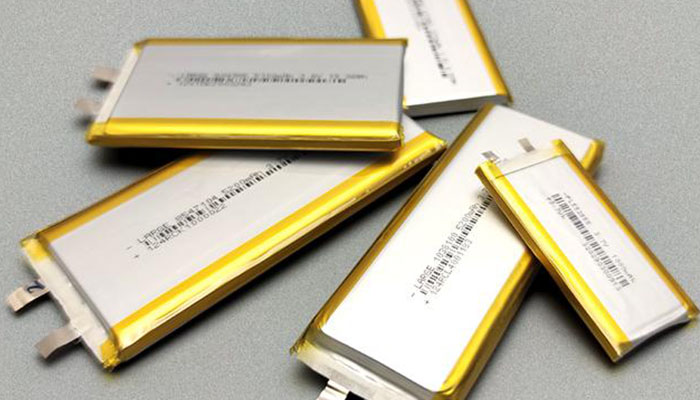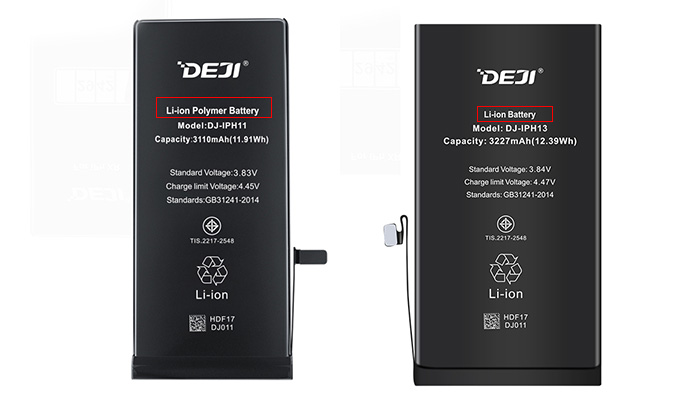In the ever-evolving landscape of portable power solutions, Lithium Polymer (LiPo) and Lithium-ion (Li-ion) batteries stand out as two prominent contenders. Both types of batteries play a critical role in powering a wide range of devices, from smartphones and laptops to drones and electric vehicles. Despite sharing the common feature of utilizing lithium for energy storage, LiPo and Li-ion batteries exhibit distinct differences in their design, performance, and application suitability.
Introduction to Lithium Polymer and Lithium-ion Batteries
Lithium Polymer Batteries (LiPo) and Lithium-ion Batteries (Li-ion) are two common types of lithium batteries. Despite their similarities, they have distinct differences. Here is a detailed comparison of their advantages and disadvantages.
Lithium Polymer Battery (LiPo):
Lithium polymer batteries (LiPo), a chemical battery, are characterized by high energy density, miniaturization and light weight. They can be made very thin for a variety of applications requiring specific shapes and capacities. Theoretical minimum thicknesses of up to 0.5mm are possible.

Advantages:
1. Flexible Shapes and Sizes: LiPo batteries can be manufactured in various shapes and sizes, ideal for devices with limited space and complex design requirements.
2. Lightweight: Using polymer electrolytes makes these batteries lighter, suitable for applications sensitive to weight, such as drones and portable electronics.
3. Higher Safety: LiPo batteries are structurally robust, less prone to leakage, and offer better resistance to overcharging, over-discharging, and short circuits.
4. Thin Design: These batteries can be made very thin, suitable for ultra-thin devices like slim laptops and smartphones.
Disadvantages:
1. Higher Cost: The production cost of LiPo batteries is generally higher than that of Li-ion batteries.
2. Lower Energy Density: LiPo batteries have slightly lower energy density, meaning they store less energy for the same volume and weight compared to Li-ion batteries.
3. Shorter Lifespan: Typically, LiPo batteries have a shorter cycle life compared to Li-ion batteries, resulting in a somewhat shorter overall lifespan.
Lithium-ion Battery (Li-ion):
A lithium-ion battery (Li-ion battery) is a type of rechargeable battery that relies on the movement of lithium ions between the anode and the cathode to store and release electrical energy. During charging, Li+ ions move from the cathode through the electrolyte to the anode, and during discharging, the process reverses. These batteries are widely used in smartphones, laptops, and other high-performance applications.

Advantages:
1. High Energy Density: Li-ion batteries have a high energy density, storing more energy in a smaller and lighter package, ideal for devices requiring long-lasting power, like smartphones and laptops.
2. Long Cycle Life: They typically offer a high number of charge-discharge cycles, making them durable for applications needing frequent recharging.
3. Low Self-discharge Rate: Li-ion batteries have a low self-discharge rate, retaining their charge longer when not in use.
4. No Memory Effect: Li-ion batteries do not suffer from memory effect, allowing users to recharge them at any time without needing to fully discharge first.
Disadvantages:
1. Safety Concerns: Li-ion batteries can pose a fire or explosion risk if overcharged, over-discharged, or short-circuited, requiring a good Battery Management System (BMS) for safety.
2. Heavier: Compared to LiPo batteries, Li-ion batteries are generally heavier.
3. Fixed Shape: They usually come in cylindrical or prismatic (rectangular) designs, which are less flexible in shape and size compared to LiPo batteries.
Distinguishing Between LiPo and Li-ion Batteries
To distinguish which lithium battery is used in your device, you can tell by looking at the appearance of the battery, its shape, the battery label and the user manual.
1. Appearance and Shape:
- Li-ion Batteries: Typically have a cylindrical or rectangular hard shell. Common cylindrical models include 18650, 21700, etc., with rectangular batteries encased in metal shells.
- Lithium Polymer Batteries: Typically a soft pack design, available in a variety of shapes and sizes, usually flat and wrapped in an aluminum-plastic film that is soft to the touch.
2. Battery Labels and Markings:
Check the labels and markings on the battery. Manufacturers usually indicate the type (Li-ion or LiPo) and technical specifications. LiPo batteries might be labeled as "LiPo" or "Lithium Polymer," while Li-ion batteries are typically marked as "Li-ion" or "Lithium-ion."

3. User Manuals and Specification Sheets:
Review the user manuals and specification sheets accompanying the batteries. These documents generally provide detailed information about the battery type, performance parameters, and suitable applications.
By combining these methods, you can effectively distinguish between Li-ion and LiPo batteries. If uncertain, consult the battery manufacturer or check the technical specifications of the specific device.
Key Differences Between LiPo and Li-ion Batteries
1. Composition:
Both types of batteries use similar materials: cobalt oxides, manganese oxides, ternary materials and lithium iron phosphate for the cathode and graphite for the anode. The main differences are lithium-ion batteries use a liquid electrolyte, while lithium-polymer batteries use a solid or gel electrolyte.
2. Structure:
Li-ion batteries are typically encased in metal shells, making them more voluminous, while LiPo batteries use polymer shells, allowing for a smaller volume and more flexible shapes.
3. Operating Principle:
Both batteries generate electricity through the movement of lithium ions between the anode and cathode. However, LiPo batteries use polymer electrolytes, enhancing safety by reducing leakage risks compared to the liquid electrolytes in Li-ion batteries.
4. Safety:
LiPo batteries, with their polymer shells, offer better safety and are less prone to explosion. Traditional Li-ion batteries can short circuit or overheat, posing safety risks. Li-ion battery electrolytes are corrosive and require special handling, whereas LiPo batteries are safer without liquid electrolytes.
5. Shape Flexibility:
LiPo batteries can be molded into various shapes, such as cylindrical or rectangular, enhancing their application range in devices like phones and laptops. Traditional Li-ion batteries have more fixed shapes.
6. Cycle Life:
The cycle life of lithium polymer batteries is generally between 500 to 1000 cycles, whereas traditional lithium-ion batteries typically have a cycle life of around 500 cycles.
Which is Better: Polymer Batteries or Lithium-ion Batteries?
Polymer Batteries:
Known for their high polymer content, they are popular in small electronic devices like Bluetooth equipment, speakers, and watches. Their shape flexibility and higher safety due to solid or gelled electrolytes make them suitable for varied device needs.
Lithium-ion Batteries:
Still dominate the market due to their high ion conductivity from liquid electrolytes, stable manufacturing processes, and adaptability to various applications. They also have a lower cost, contributing to their widespread use.
Detailed Analysis:
1. Voltage and Capacity: Polymer batteries can achieve high voltage through multiple layers but have less capacity compared to standard Li-ion batteries, which need multiple cells in series for high voltage.
2. Conductivity: Polymer batteries have lower ionic conductivity than Li-ion batteries, despite improvements with additives. Li-ion batteries maintain stable conductivity unaffected by additive quality.
3. Manufacturing and Cost: Polymer batteries excel in thin production, while Li-ion batteries are better for thicker designs. Due to production and material cost differences, polymer batteries are generally more expensive.
Conclusion:
Both batteries have unique advantages. Polymer batteries offer shape flexibility and higher safety, while Li-ion batteries excel in conductivity, manufacturing, and cost-efficiency. The choice depends on the specific application and budget.
For small devices like smartwatches, polymer batteries are ideal due to their flexibility and safety. For applications requiring higher voltage and capacity, such as electric vehicles and power tools, Li-ion batteries offer better cost-effectiveness and broader application potential.
 sales@batterydeji.com
sales@batterydeji.com




